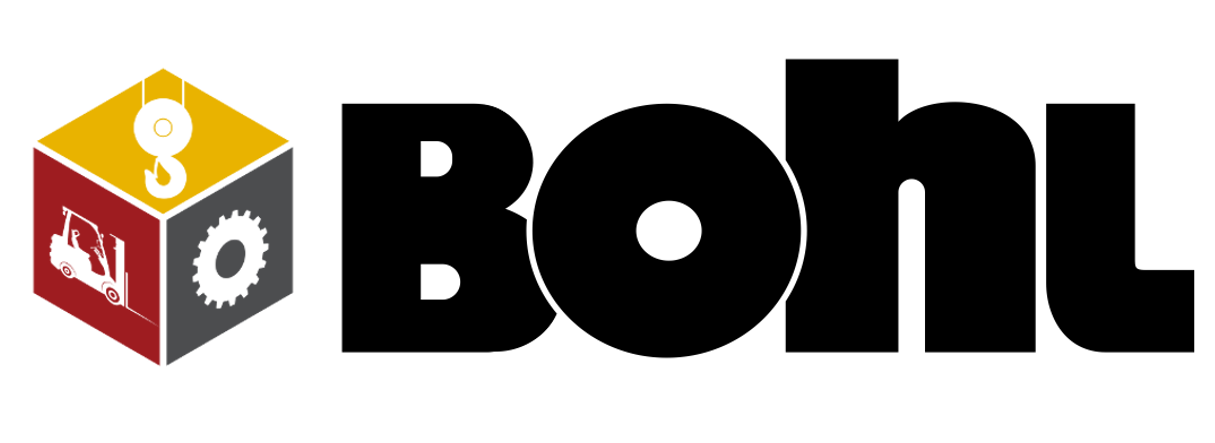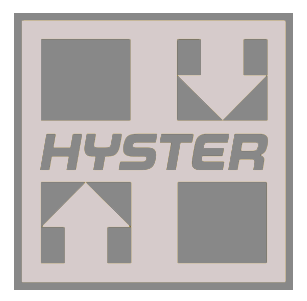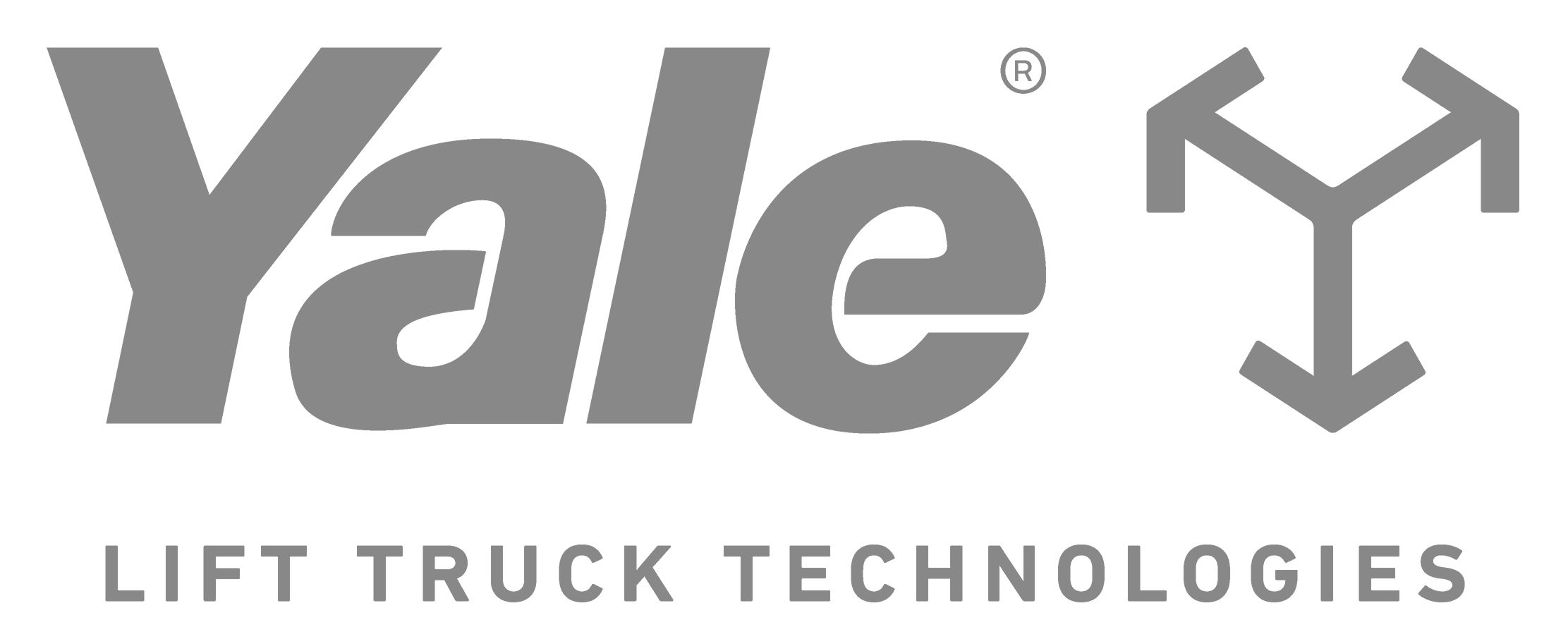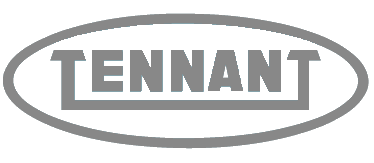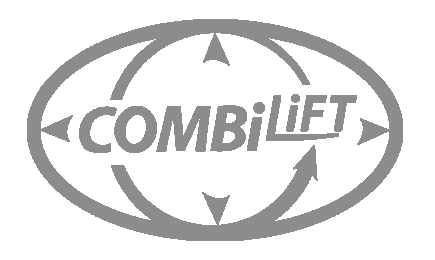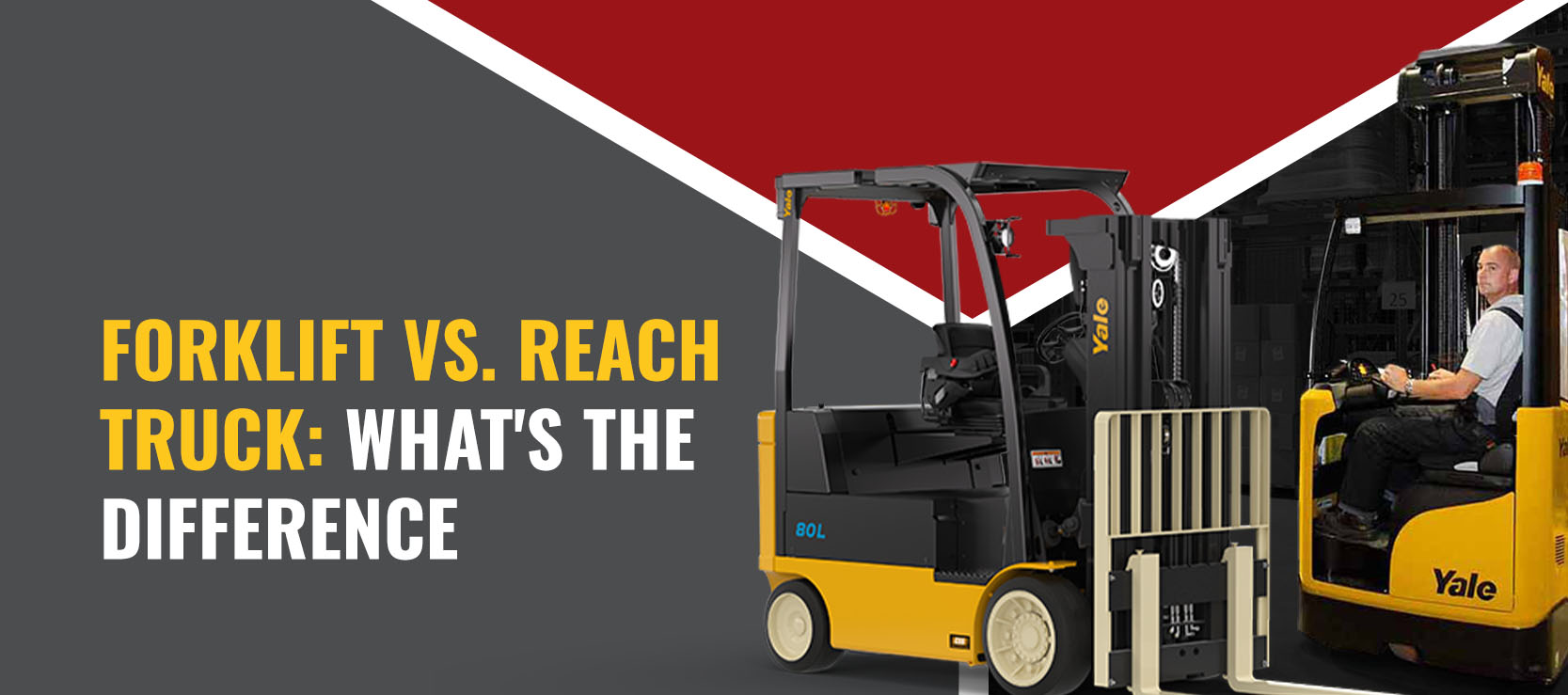
If your business needs equipment to support efficient, productive and safe lifting operations, you may be in the market for a forklift or reach truck. Before investing in a new piece of equipment, understanding the features of each type is crucial for making an informed decision that supports your daily operations.
Explore key reach truck vs. forklift performance and design differences below.
What Is a Forklift?
Forklifts, also known as lift trucks, are industrial vehicles designed for lifting, moving and transporting loads over short distances. These versatile pieces of equipment are available in various types, including:
- Container handlers
- Order pickers
- Pallet trucks and stackers
- Tow tractors
Forklifts are often used for applications in warehouses, manufacturing plants, retail stores and distribution centers for tasks like:
- Loading and unloading trucks
- Organizing inventory
- Stacking pallets
These machines are renowned for their ability to lift heavy loads. Many models can navigate indoor and outdoor settings, depending on the tire type and whether they are battery- or fuel-powered. Common outdoor applications can include:
- Construction sites: Building teams can use forklifts to haul heavy machines, such as generators and compressors, or materials, such as bricks, plywood and pipes, across the jobsite.
- Logistics centers: Heavy-duty forklifts can be essential to efficiently loading and unloading containers at logistics or distribution centers.
- Lumberyards: Forklifts can be go-to equipment in lumberyards, helping crews lift and move heavy timber and wood products.
What Is a Reach Truck?
Reach trucks are a specialized type of forklift featuring an extendable mast that enables the machine to reach especially high or deep units. These machines are primarily suited for indoor environments and spaces with high-density storage, tall shelving or narrow aisles.
Most reach trucks are battery-powered and offer emission-free operation, making them ideal for indoor applications, such as:
- Organizing inventory in a warehouse.
- Picking and packing operations at a distribution center.
- Carrying raw materials across a manufacturing facility.
- Storing pallets at high heights at a freight terminal.
Key Differences Between Forklifts and Reach Trucks
While forklifts and reach trucks can perform similar functions, understanding their differences is essential to finding the option that suits your specific applications. Check out important forklift and reach truck comparisons below.
Design and Size
Forklift design relies on a counterweight at the equipment’s rear for stability and features front-facing forks. This configuration enables the machine to handle heavy loads.
Reach trucks are typically more compact and offer easy navigation, especially in narrow aisles. They feature stabilizing legs in the front and an extendable mast with sideways-facing forks that can access deep into racking systems.
Load Capacity and Lift Height
A forklift can generally provide operators with higher load capacities than reach trucks. However, the latter is often suited to reach greater heights.
While each model offers a unique load capacity and maximum lifting height, a reach truck is generally best for high stacking in storage or warehousing facilities. Forklifts are better for handling heavier loads, such as large pallets, machinery, appliances or bulk containers.
Maneuverability and Operational Environment
Forklifts with pneumatic tires can work for outdoor and indoor applications, giving the equipment versatility. These machines are typically larger than reach trucks, requiring wider aisles for safe navigation.
Reach trucks often have fiberglass, industrial deep lug or wire fiber tires, making them better suited for indoor tasks, such as assisting with picking and packing retail orders, replenishing inventory or retrieving pallets from the racking system’s upper levels.
Cost Considerations and Maintenance
While the initial cost of your equipment will depend on factors like brand name, load capacity, fuel type, special features and lift height, forklifts generally have higher upfront costs than reach trucks.
Both types of equipment require routine inspections and maintenance to support safe operation and longevity. Reach trucks may require slightly more specialized maintenance because of their electrical and hydraulic systems, depending on the model.
How to Choose Between Forklifts and Reach Trucks
When choosing the right equipment for your applications, consider these essential factors:
- Facility layout: Assess your facility’s design and where your equipment must navigate. A forklift may be suitable for working in mixed-use areas with wider aisles, while a reach truck is better for tight spaces, narrow aisles and tall racking systems.
- Working environment: Do you need a machine for indoor or outdoor applications? Battery-powered reach trucks tend to be best for tackling tasks indoors, while you can find diverse indoor- and outdoor-friendly forklift models.
- Typical load size and weight: Evaluate the types of loads your team typically works with. Reach trucks can be an excellent option for lifting and moving lighter, palletized loads. A forklift may be better if your team often handles heavier materials or goods.
- Stacking height requirements: Consider your facility and the heights your equipment needs to reach during typical operations. A reach truck generally offers greater lift height than forklifts and is a better choice for businesses that have especially tall racking solutions.
- Operator skill level: Both types of equipment require specialized training and practice to ensure safe operation. Most standard forklift models are easy to operate. Reach trucks may require slightly more skill to navigate seamlessly throughout your facility. Steering on reach trucks can be less intuitive, and the controls can be more complicated.
- Safety and compliance: The Occupational Safety and Health Administration (OSHA) mandates that all powered industrial truck operators be trained and certified by a qualified instructor and follow safe operating practices. Ensure you choose equipment that supports optimized safety through proper maneuverability, load capacities and lift heights.
If you’re still unsure whether a reach truck or forklift is the right addition for your business, consult an equipment expert. They can help you carefully assess your operational needs and find a model that suits your unique loading, moving and lifting applications. For example, a professional can point you toward the best forklifts for warehouse operations that involve especially large loads.
Your business can also benefit from a short-term rental. You can use the period to test different equipment models and determine which options are most advantageous for your crew and facility.
Contact Bohl Equipment Co. for High-Quality Equipment
Whether you want to add a reach truck or forklift to your operations, Bohl Equipment Co. is here for your business. We have locations in Toledo and Marion, Ohio, as well as Fort Wayne, Indiana. We offer a vast inventory of new equipment and used machines to fulfill your operation’s unique requirements.
Our professionals can help you determine the right equipment options for your applications. We’ll ensure you find a high-quality model that suits your budget and capacity needs.
Are you ready to expand your fleet and enhance operations? Contact the experts at Bohl Equipment Co. to get started today.
